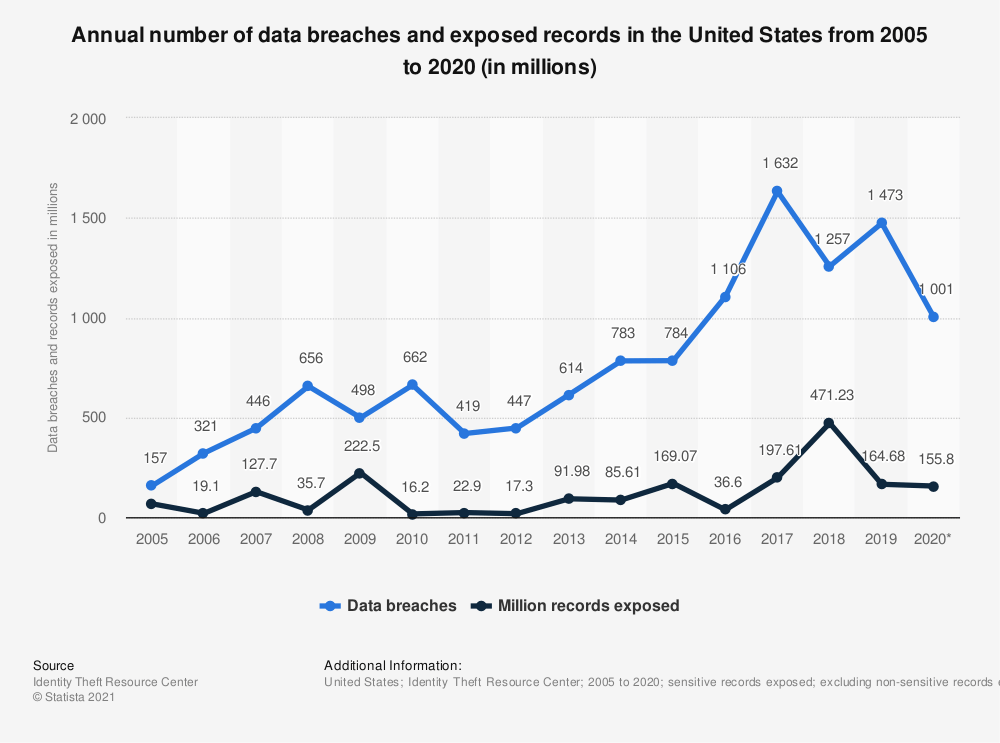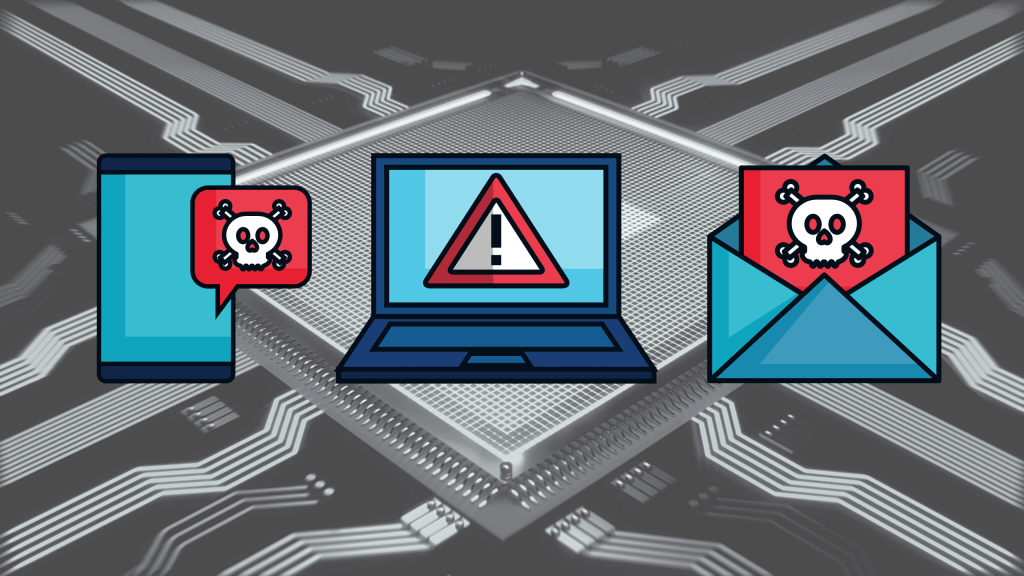A lot of people think that life became easier with the fast-paced development of technologies and the shift to remote work. But is it really so? And does “easier” also mean “safer”?
The progress of technologies goes hand in hand with the evolution of threats to their users. Nowadays being web-connected also means being vulnerable. And if you pay no attention to details, a small vulnerability can cause a huge data breach.
In general, data breaches happen due to weaknesses in technologies or user behavior. Malicious criminals are constantly trying to get to their victims through emails, social networks, online services, text messages, etc. And every successful attempt costs a lot for businesses, governments, and individuals. Anyone can become a victim and also can put others at risk if they are not protected.
While digital transformation is increasing the supply of data moving, the amount of data breaches is enlarging dramatically. Take a closer look at the graph provided by Statista. It shows the situation only in the US, but the numbers speak for themselves.

Last year’s researches show that the average cost of an enterprise data breach is $3.9 mil. Also, there were at least 36 billion compromised records and the losses from cybercrime rose six-fold in 2020 alone.
A data breach can happen to any business and every person. Even giants like LinkedIn aren’t safe. The list of the biggest data breaches of the 21st Century indicates they have already reached enormous magnitudes. Everyone has something to lose from a breach. That is why data breach prevention needs to include every individual at all levels – from your team members to the end-users. Even your own kid can bring the risk while simply playing with your mobile phone using a home network.
The list of common vulnerabilities targeted by cybercriminals:
• Compromised assets
• Mobile Devices
• Weak credentials
• Stolen credentials
• Payment Card Fraud
• Third-party access
It’s important to remember that you cannot protect all data. But there are ways to avoid data breaches.
• Educate and train your employees. Human error is still the most powerful way for criminals to get access to valuable data. New attacks are developing constantly, so the approach to guarding against them can’t be limited to one training.
• Don’t blame your employees and report suspicious activity. According to Ernest N. Hayden’s article “Assumption of breaches is the new norm”. Blaming an individual for not having the right knowledge about cybersecurity is just a way of not taking responsibility to ensure the company’s employees keep its data secure.
• Create strong credentials and multi-factor authentication to encourage better user cybersecurity practices. Instead of using the same password for all your accounts, generate long, random passwords for every account. Longer passwords are exponentially harder to brute-force.
• Update software when options are available and upgrade devices if the software is no longer supported by the manufacturer.
• Use reliable backups. Make sure you trust your backup solution to help with a massive restore event. If now, perhaps you need a better backup system.
Data breaches continue to become increasingly sophisticated. And leaving this fact without your attention is like leaving your door unlocked for thieves. So check all the vulnerabilities, don’t leave them unpatched, and stay on the safe side while taking all the best from being an internet user.
